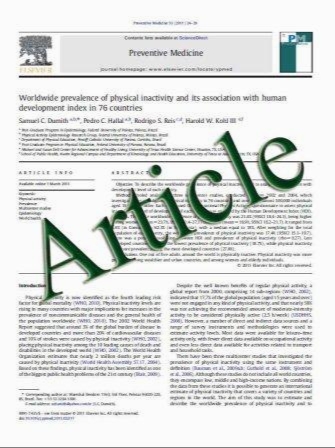Sunlight and dietary contributions to the seasonal vitamin D status of cohorts of healthy postmenopausal women living at northerly latitudes: a major cause for concern?
- نوع فایل : کتاب
- زبان : انگلیسی
- مؤلف : H. M. Macdonald & A. Mavroeidi &W. D. Fraser & A. L. Darling & A. J. Black & L. Aucott & F. O’Neill & K. Hart & J. L. Berry & S. A. Lanham-New & D.
- چاپ و سال / کشور: 2010
Description
Summary We assessed sunlight and dietary contributions to vitamin D status in British postmenopausal women. Our true longitudinal 25-hydroxyvitamin D (25(OH)D) measurements varied seasonally, being lower in the north compared to the south and lower in Asian women. Sunlight exposure in summer and spring provided 80% total annual intake of vitamin D. Introduction Vitamin D deficiency is highlighted as a potential problem for countries at high latitude, but there are few true longitudinal, seasonal data to allow regional comparisons. We aimed to directly compare seasonal variation in vitamin D status (25(OH)D) in postmenopausal women at two northerly latitudes and to assess the relative contributions of sunlight exposure and diet. Methods Vitamin D status was assessed in 518 postmenopausal women (age 55–70 years) in a two-centre cohort study with serum collected at fixed three-monthly intervals from summer 2006 for immunoassay measurement of 25 (OH)D and parathyroid hormone. At 57° N (Aberdeen, Scotland, UK), there were 338 Caucasian women; at 51° N (Surrey, South of England, UK), there were 144 Caucasian women and 35 Asian women. UVB exposure (polysulphone film badges) and dietary vitamin D intakes (food diaries) were also estimated. Results Caucasian women had lower 25(OH)D (p<0.001) at 57° N compared to 51° N. Median (interquartile range) in nanomoles per litre for summer (June–August) at 57° N was 43.0 (20.9) and at 51° N was 62.5 (26.6) and for winter (December–February) at 57° N was 28.3 (18.9) and at 51° N was 39.9 (24.0). For Asian women at 51° N, median 25(OH)D was 24.0 (15.8) nmol/L in summer and 16.9 (15.9) nmol/L in winter. Median dietary vitamin D intakes were 80–100 IU for Caucasians and 50–65 IU for the Asian women. Sunlight was the main contributor to 25(OH)D with spring and summer providing >80% total annual intake. Conclusions These longitudinal data show significant regional and ethnic differences in UVB exposure and vitamin D status for postmenopausal women at northerly latitudes. The numbers of women who are vitamin D deficient is a major concern and public health problem.
Osteoporos Int (2011) 22:2461–2472 DOI 10.1007/s00198-010-1467-z Received: 21 July 2010 / Accepted: 5 October 2010 / Published online: 18 November 2010


